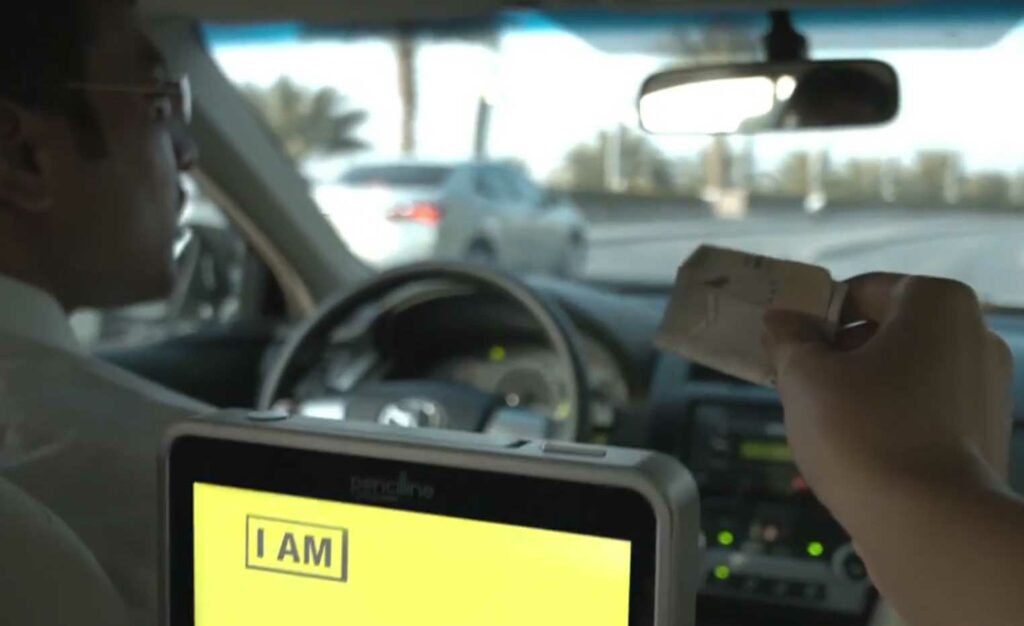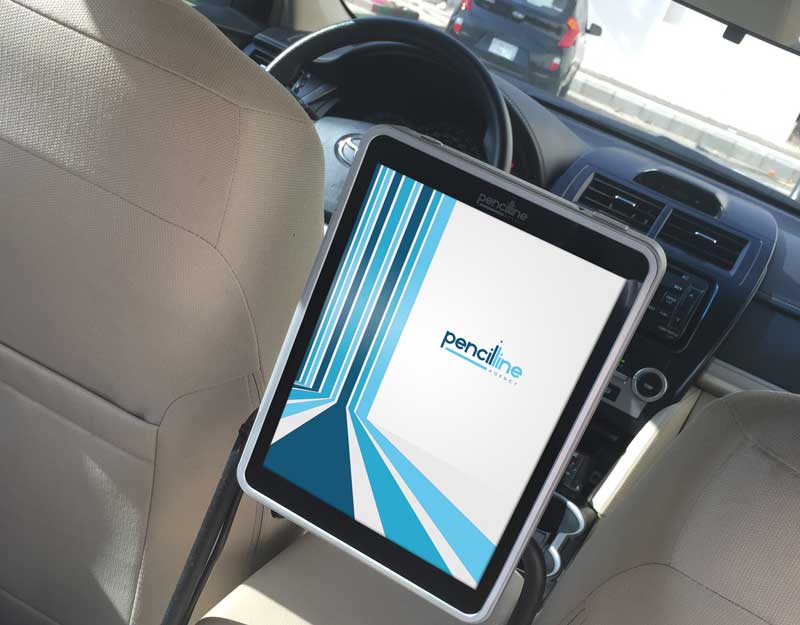Maximize passenger experience and advertising
with digital signage in taxis and buses
A Taxi digital signage solution that stays on track!
Automotive digital signage opportunities remain largely underexploited. Navori Labs is a Swiss company and a global leader in Digital Signage software. They take the lead in this market segment with the release of their Navori GPS Trigger module.
Any public transportation company (train, tramways, bus, taxi, limousine…) can now deploy a state-of-the-art onboard Digital Signage System. It keeps its track based on the renowned Navori digital signage software platform.
Public transportation passengers are a classic example of what in marcom terminology is described as a ‘captive audience’. Traditionally public information as well as product promotions are broadcasted in a simple – dull loop. The more signage content is dynamic, the higher the catch rate on the audience. Matters to diffuse relevant content.
Navori Player is offering location-based content and audio triggering based on GPS data. The data is retrieved in real-time from connected to the onboard vehicle screens.
Relevant content, location-based does the trick. In fixed locations where enough bandwidth is available, there is no real constraint. Certainly not when deploying Navori. But when it comes to efficiently operating such a communications scenario in moving vehicles (buses, trains, and taxis) the technical challenges are huge.
Navori Player is the client software deployed on professional automotive digital signage hardware. It is capable of triggering specific content based on a real-time system read-out of GPS data. Hence the vehicle’s location is known by the player.
This background GPS data triggers content that is real-time location-based. For example, the announcement of the next bus stop up to public or tourist information. Even promotions related to local businesses can be included. Real-time information such as the latest news feeds or (local) weather information can be included, all in full HD broadcast TV quality.
GPS trigger is a plug-in for navori player that retrieves the content and data feeds
Upon the arrival of the f.i. a bus or train at the terminal, media content and data are uploaded to the player by ‘Wi-Fi-docking’. Connecting to a unique and secure IP address to update the player. When out of reach of the docking signal the player switches to a 3G or GPRS connection. If the update of players is incomplete at a departure time of the vehicle, the 3G connection takes over at Wi-Fi signal loss and completes the upload and also starts reading in all live data feeds such as news ticker RSS data, weather applets, etc. until the next secure WiFi docking site takes over.
This secures and balances the communication load and costs.
The average data consumption for the network management (household data such as reporting and media statistics only – media upload and real-time data volumes not included) based on a 24/7 calculation measured 100 Mbit/month or less only, whereas any other comparable machine-to-machine deployment architecture eats between 1 to a dazzling 3 GB per month.
This data is monitored by the GPS TRIGGER and based on certain threshold values – geographical zone information – content is triggered relevant to the position of the vehicle. This content type is the audio and visual communication of ‘next stop’- ‘current stop’ – trajectory information – etc.
This information can be complemented with f.i. travel time delay, roadblock, deviation, and other real-time data through Wi-Fi (docking) or 3G secure connections.
All different transportation trajectories are managed this way, even if they are random as in the case of a taxi or limousine service.
Since the application synchronizes with Google Maps, the trajectory and impact resolution can be defined at the Navori Content manager level in a concise and easy-to-use interface.
Recommended Hardware
For taxis, the use of tablets like those offered by Elo or Philips or Asianc ODM manufacturers are commonly seen. The hardware consumes very little electricity, as it is connected to the vehicle’s battery. This equipment runs on Google Android, is robust, and tolerant to frequent power interruptions. Optionally, these tablets include GPS and a 4G module.
For larger capacity vehicles, the architecture is the same but the size of the screens is larger, and often there are multiple screens.
Users who wish to use a separate media player device, Navori Stix is the ideal solution.

The benefits of in-vehicle Digital Signage screens
Taxi signage can be a great way to get your message out there, whether you’re advertising your business or just promoting a cause. Here are some of the benefits of automotive digital signage displays in cars, taxis and busses:
- They’re attention-grabbing – Digital signage displays are certainly eye-catching, especially when they’re placed in high-traffic areas like taxi cabs. This means that your message is more likely to be seen and remembered by potential customers or supporters.
- They’re interactive – Many digital signage displays now come with interactive features, such as touch screens or QR codes. This allows people to easily get more information about your business or cause, without having to search for it themselves.
- They’re cost-effective – Digital signage displays are often more cost-effective than traditional advertising methods, such as print or television ads. This is because you can update your message as often as you like, without incurring any additional costs.
- They’re eco-friendly – Digital signage displays are a great eco-friendly option, as they don’t require any paper or other materials. This means that you can help reduce your carbon footprint, while still getting your message out there.
If you’re looking for a cost-effective and attention-grabbing way to advertise your business or promote a cause, automotive digital signage solutions in cars, taxis, and buses are a great option.
